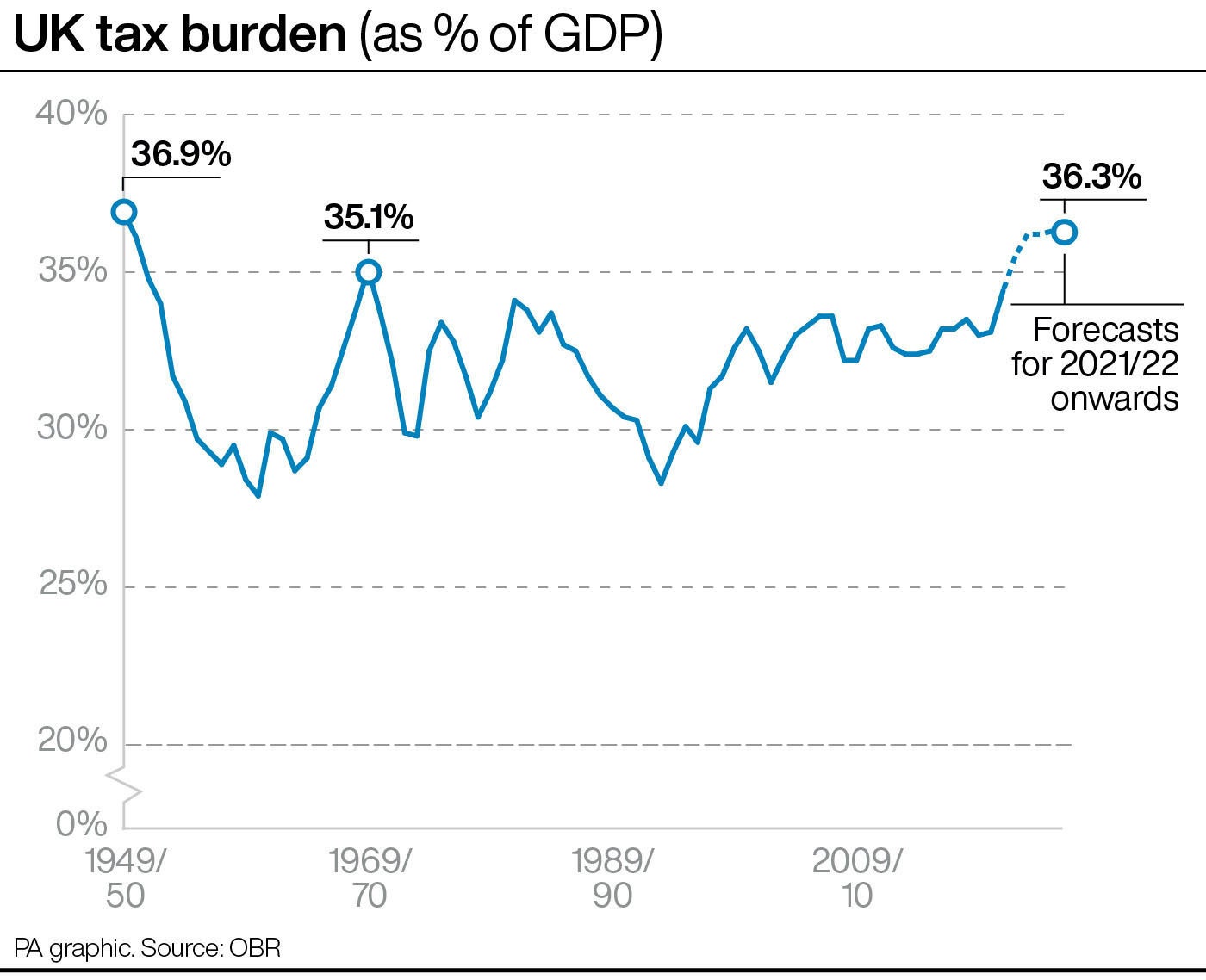
Prime Minister Boris Johnson said he would “much rather” see the overall UK tax burden come down “sooner than later” – but forecasts suggest it will carry on rising for some years.
The total tax burden in the UK in 2020/21 – the amount of taxes collected by the Government both directly and indirectly – stood at the equivalent of 33.1% of GDP (gross domestic product, or the total value of the economy).
This is estimated to have climbed to 34.4% in 2021/22, according to forecasts published in March by the Office for Budget Responsibility (OBR).
The burden is projected to rise further, reaching 35.5% in 2022/23 and 36.2% in 2023/24, before climbing again to 36.3% by 2025/26.
This would be the highest level since the late 1940s, during the post-war Labour government of Clement Attlee.

The rise in the tax burden will be driven by a number of factors, the OBR said.
These include:
– Corporation tax rate rises, including the cancelling of the rate cut from 19% to 17% announced in the March 2020 Budget, and the rate increase to 25% from April 2023, announced in the March 2021 Budget.
– The income tax personal allowance and higher rate threshold freezes announced in the March 2021 Budget, which mean more income will be subject to tax and a greater proportion of it taxed at the higher rate.
– The health and social care levy announced in September 2021, which will be formally introduced from April 2023.
The OBR’s forecasts have been adjusted to reflect the two tax cuts in personal income announced by Chancellor Rishi Sunak in his spring statement: a cut in the basic rate of income tax from 20% to 19% by May 2024, and raising the threshold at which people start paying national insurance from July 2022.
Had Mr Sunak not announced these tax cuts, it is likely the overall tax burden would have been projected to rise even higher.
During the Conservative governments of 1979-97 the tax burden peaked at 34.1%, while during the Labour governments of 1997-2010 it peaked at 33.6%.







